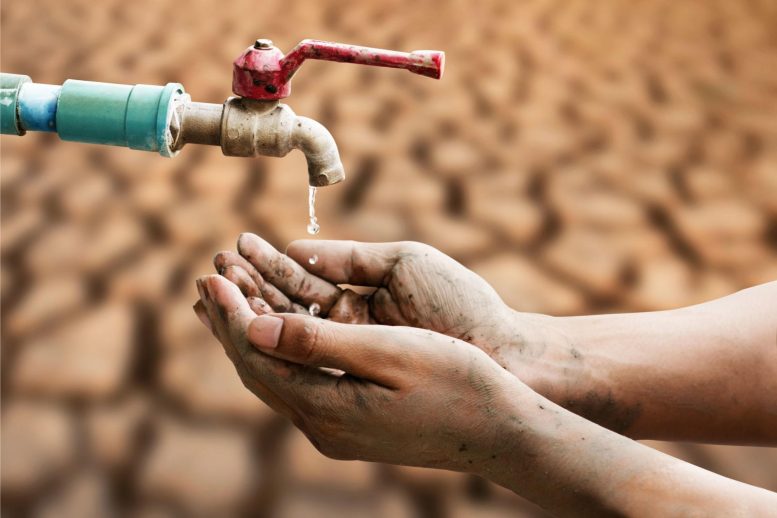
A recent study from Utrecht University projects that clean water scarcity will worsen globally due to climate change and socioeconomic factors, affecting up to 66% of the population by the century’s end, particularly in the Global South. The research emphasizes the need for integrating water quality considerations in managing water scarcity, highlighting that future strategies must address both water quantity and pollution to mitigate this growing crisis.
A new study forecasts escalating global water scarcity, with up to 66% of the population affected by 2100, especially in the Global South, underscoring the critical need to address water quantity and quality in future water management strategies.
Recent research from Utrecht University, recently published in Nature Climate Change, predicts an intensification of water scarcity due to climate and socioeconomic changes. The study, employing a sophisticated global water quantity and quality model, forecasts a rise in clean water shortages through the end of the century, disproportionately affecting populations in the Global South.
Humans require clean water for drinking and sanitation purposes, but also for the production of food, energy, and manufactured goods. As communities and policymakers grapple with water scarcity issues on the ground, researchers at Utrecht University aim to shed light on the escalating global clean water crisis.
Current and future water scarcity
Using simulations from a state-of-the-art water quantity and quality model, the authors assess present-day and future global water scarcity. “Climate change and socioeconomic developments have multi-faceted impacts on the availability and quality of, and demands for, water resources in the future,” says lead author Dr. Edward Jones. “Changes in these three aspects are crucial for evaluating future water scarcity.”
The study estimates that 55% of the global population currently lives in areas that experience a lack of clean water in at least one month per year. “By the end of the century, this may be as high as 66%,” remarks Jones.
Strong regional differences in future water scarcity
While global water scarcity is projected to intensify in the future, both the changes and impacts will not occur equally across all world regions. Future increases in water scarcity in Western Europe and North America, for example, are concentrated in just a few months of the year – predominantly driven by water quantity aspects. Conversely, water scarcity increases in developing countries are typically more widespread in space and persist for a larger portion of the year.
Jones remarks, “Increases in future exposure are largest in the Global South. These are typically driven by a combination of rapid population and economic growth, climate change and deteriorating water quality.”
Quality: the invisible part of water scarcity
Water quality – despite being crucial for safe water use – remains an under-represented component of water scarcity assessments. “Previous assessments still predominantly focus on water quantity aspects only,” explains Jones. “Yet, the safe use of water also depends on the quality.”
Therefore, a key aim of this study was also to normalize the inclusion of water quality in water scarcity assessments – and in the design of management strategies for alleviating water scarcity.
Jones concludes, “The lack of clean water presents a systemic risk to both humans and ecosystems, which is becoming increasingly difficult to ignore. Our work highlights that, alongside substantially reducing our water demands, we must place an equally strong focus on eliminating water pollution in order to turn the tide on the global water crisis.”
Reference: “Current and future global water scarcity intensifies when accounting for surface water quality” by Edward R. Jones, Marc F. P. Bierkens and Michelle T. H. van Vliet, 23 May 2024, Nature Climate Change.
DOI: 10.1038/s41558-024-02007-0









“The study, employing a sophisticated global water quantity and quality model, …”
How is the veracity of this model vetted? What are the 2-sigma bounds (margin of error) on the 55% and 66% nominal estimates? Was the presence of nitrates, arsenic, and lead taken into account in the models? How was the precipitation, problematic in a Global Circulation Models (GCMs), estimated and what was the uncertainty on it? GCMs frequently have contradictory estimates on future regional precipitation; how was that handled?
Don’t bother. Those models are all hallucinatory garbage.
So, modern “science” is now entirely dependent on probability models. I’m sure calling them “sophisticated” impresses some people. But it’s not really science anymore. It’s not grounded in reality in any way. The word I’d use is “casino”.
This is all part of the build up to governments taking control of the water supply.
That way they control who, when, where, and how anyone/everyone gets water.
Toilets waste huge amounts of clean drinkable water. It’s simple (for those who use toilets) to save literally swimming pools of water over time by urinating in a designated cup and carefully pouring it down any drain followed by a little rinse water in the cup and sink. I’ve been doing it for decades.